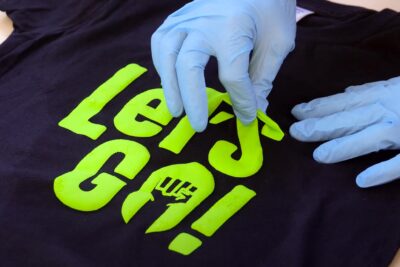
🤯DTF Printing vs. Heat transfer vinyl
🤯DTF Printing vs. Heat transfer vinyl
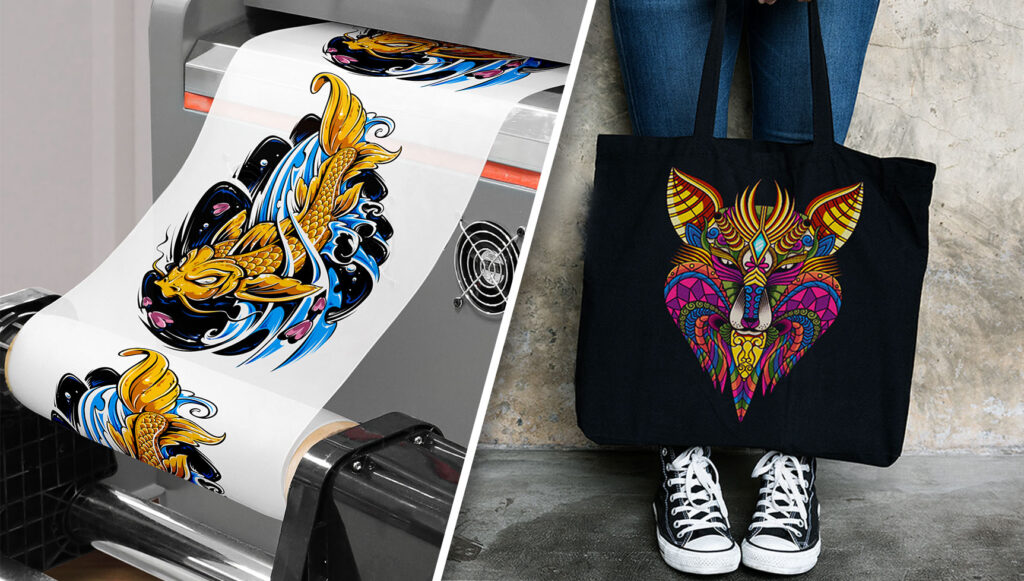
The DTF printing (direct-to-film printing) and textile vinyl are two popular methods for transferring designs to fabrics. We help you identify the pros and cons of DTF printing and textile vinyl. We will compare their similarities and differences to decide which of these two printing methods is more beneficial to your business.
What is DTF printing?
To start with DTF printing, first of all we will need several pieces of equipment, including:
- DTF Printer (or direct-to-film): is a specialized digital printer that is designed to print designs directly onto a film transfer. They are commonly used in the textile and apparel industry to print durable, high quality designs.
- DTF ink is a specialized type of ink used in DTF printing technology. It is formulated to work with DTF printers and heat transfer films on a variety of fabrics, including cotton, polyester and blends. It is manufactured with a water-based pigment ink that has a high viscosity, allowing it to adhere to the transfer film and fabric. It is also designed to dry quickly and resist fading, cracking and peeling, even after several washes.
- DTF Film is a specialized film used in this type of technology and serves as a support for the ink, allowing the design to be printed on the film before being transferred to the fabric by means of a plate. It is made of a polyester material coated with a special adhesive layer that allows the ink to adhere to the film. The film is usually white or clear and can come in a variety of widths and lengths to suit different printing needs.
- Hot melt powder: is an alternative to traditional liquid adhesives and can be applied to the fabric with a heat press. When melted, it creates a strong and very resistant bond.
- Heat Press is a device used to transfer a design or image to a fabric or substrate using heat and pressure. Hot-pressing machines are commonly used in the textile and apparel industry to apply designs on T-shirts, hats, bags and other products. This is printed on transfer film using a DTF printer or other digital printing technology. This is then placed on the fabric, and the fabric and transfer film are placed on the bottom plate of the heat press machine. The top plate is lowered onto the fabric and transfer film, applying heat and pressure to transfer the design to the fabric.
- RIP Software RIP software: this is specialized software that helps prepare design files for printing.
- Fabric The fabric on which to print the design, including cotton, polyester and blends.
If you need it, watch this video we have prepared for you on everything you need to know about DTF:
How does DTF printing work?
We explain step by step how DTF printing works:
- Design creation: we will use a graphic design software or we will obtain it from a pre-existing image or pattern.
- Printing the design: we will print on DTF transfer film with a DTF printer. The printer uses specialized DTF ink to print the design on the film.
- Hot melt adhesive powder application: After printing the design on the transfer film, a layer of hot melt adhesive powder is applied to the design using an agitator or electrostatic powder spraying equipment. This step is important because the powder helps the ink adhere to the fabric during the heat transfer process.
- Curing of the hot melt powder: after applying the hot melt adhesive powder, the transfer film is cured or heated to activate the powder and make it adhere to the ink.
- Design transfer: once the hot melt adhesive powder is cured, the transfer film is placed on the fabric, and the fabric and film are placed on the bottom plate of the plate. Then, the top plate of the plate is pressed down to transfer the film design to the fabric.
- Removing the transfer film: Once the transfer is complete, the transfer film is removed from the fabric, leaving the design on the fabric.
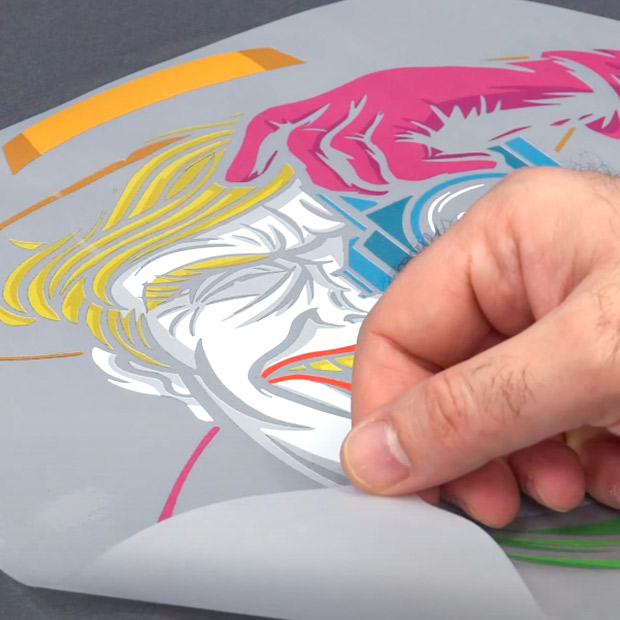
Advantages and disadvantages of DTF printing
DTF printing is a relatively new technology that offers several advantages and disadvantages compared to other printing methods.
Advantages:
- High quality: DTF printing offers high quality prints with vibrant colors, excellent sharpness and great detail.
- Wide color gamut: DTF ink offers a wide range of colors, including fluorescent and metallic inks, which can be difficult to achieve with other printing methods.
- Cost-effective: DTF printing is a cost-effective printing method, especially for small and medium-sized orders.
- Durable: DTF prints are very durable and can withstand multiple washings without fading or peeling.
- Versatile: DTF printing can be used on a variety of fabrics, including cotton, polyester and blends.
Disadvantages:
- Initial investment: DTF printing requires a significant initial investment in specialized equipment, including a DTF printer, hot melt adhesive powder and a thermal plate.
- Limited print size: DTF printing is limited by the size of the transfer film and plate, which may not be suitable for larger designs.
- Learning curve: DTF printing requires some technical expertise, which may take some time to learn.
- Longer processing time: DTF printing requires several steps, including application of the hot melt adhesive powder, curing of the powder and transfer of the design, which can be time-consuming.
- Environmental concerns: The use of hot melt adhesive powder can be messy and potentially hazardous to the environment if not disposed of properly.
Overall, DTF printing offers a versatile, cost-effective and high-quality printing method that is ideal for small to medium-sized orders. However, due to the initial investment and learning curve, it may not be suitable for larger designs or for those just starting out in the printing industry.
What is textile transfer vinyl?
The textile vinyl is a material used to create custom designs and graphics that can be applied to fabrics or textiles with a heat press machine. It is a type of vinyl that has a heat-activated adhesive backing, which means it can be cut into designs, shapes and lettering, and then heat-pressed onto a fabric to create a permanent bond. Textile vinyl comes in a variety of colors, finishes and textures, including gloss, metallic, soft metallic, 3D Puff, flock, glow in the dark, chameleon, rainbow glow and more, allowing for a wide range of design options.
What is needed for textile transfer vinyl?
In general, the use of HTV requires some specialized equipment and tools, but it is a fairly simple process that can be done at home or in a small business.
To use heat transfer vinyl, you will need the following:
- Textile vinyl material: this is the vinyl material that will be cut into a design and transferred to fabric. You can choose from a variety of colors, finishes and textures.
- Vinyl cutter: A vinyl cutter vinyl cutter is used to cut the vinyl material into the desired design. There are different types of vinyl cutters available, ranging from manual to electronic models.
- Heat Press: A heat press is used to transfer the HTV design to the fabric. A heat press machine applies heat and pressure to activate the adhesive on the vinyl and bond it to the fabric. There are different types of irons available, ranging from manual to automatic models.
- Fabric or textile: Textile vinyl can be applied to a variety of fabrics and textiles, such as cotton, polyester and blends. The fabric or textile must be clean and free of wrinkles or creases.
- Protective film: A protective film, such as Teflon or silicone, is used to protect the vinyl and fabric from burning or sticking to the plate.
How does textile vinyl work?
Textile vinyl works by using a combination of heat and pressure to transfer a design from a vinyl sheet to a fabric or textile. Here is an overview of how it works:
- Design: First, a design is created using specialized software or a prefabricated design is selected. The design is then sent to a vinyl cutter, which cuts the design into the HTV material.
- Removal: unwanted vinyl is removed from the material, leaving only the desired design on a transparent backing sheet.
- Placement: The carrier sheet with the design is placed on the fabric or textile at the desired location.
- Plate : the fabric, with the design and backing sheet in place, is placed on a transfer plate. Temperature, time and pressure are adjusted according to the manufacturer's instructions for the specific type of vinyl being used.
- Peeling: After the hot pressing cycle is completed, the fabric is removed from the machine and allowed to cool. The backing sheet is then peeled off, leaving the HTV design permanently adhered to the fabric.
The heat and pressure of the iron activates the vinyl adhesive, which causes it to adhere to the fabric. The result is a tough, durable design that will not peel or crack over time, even after repeated washings. In this video we give you ideas on which textile vinyl to buy.
Advantages and disadvantages of textile vinyl
Advantages:
- Versatility: can be used on a wide range of fabrics and textiles, including cotton, polyester and blends. It can also be applied to various items, such as T-shirts, hats, bags and more.
- Customization: allows you to create and apply customized designs to fabrics or textiles. This is ideal for creating customized items such as team uniforms, gifts or promotional items.
- Durability: the designs are durable and can withstand multiple washings without peeling or cracking. This makes it ideal for creating durable fabric designs.
- Cost-effectiveness: it is a cost-effective way to create customized designs, especially for small quantities. It requires minimal setup and equipment, making it a popular choice for small businesses or hobbyists.
- Variety: textile vinyl types come in a wide variety of colors, finishes and textures, allowing for many creative options when designing and applying. come in a wide variety of colors, finishes and textures, allowing for many creative options when designing and applying.
Disadvantages:
- Limited detail: The detail that can be achieved with HTV is limited by the size of the vinyl cutter and the HTV material. Designs with intricate details or small lettering may not transfer well.
- Labor intensive: HTV requires multiple steps, including cutting, preparing and heat pressing. This can be time consuming, especially for large quantities or complex designs.
- Limited application: HTV is not suitable for all fabrics and textiles, and may not adhere well to certain materials, such as nylon or silk.
- Texture: Some HTV materials may have a texture or feel that may not be desirable for certain projects, such as a stiff or rubbery feel.
In general, it is a popular and versatile option for creating custom designs on fabrics or textiles. A cost-effective and durable option for a wide range of projects.
How to choose the best option for your business?
Before deciding whether to print DTF or textile cut vinyl is right for your business, consider that one is clearly not better than the other because both are good at different tasks.
If you need speed, flexibility, a variety of colors and to decorate many different elements, perhaps the DTF is better. Also if you are looking for a high quality full color printing process for larger production volumes.
If you just want to do simple projects, t-shirt vinyl might be a better choice. It is the most cost-effective and versatile option for smaller production runs or custom designs.
Summarizing:
- Design complexity: DTF printing is ideal for complex, full-color designs with intricate details, while HTV is more suitable for simpler designs with fewer colors.
- Type of fabric or textile: DTF printing works best on fabrics with a higher polyester content, while HTV can be used on a wider range of fabrics and textiles, including cotton, polyester and blends.
- Production volume: DTF printing is more efficient for larger production volumes due to the speed of the printing process, while HTV is more suitable for smaller production runs or customized designs.
- Equipment and setup costs: DTF printing requires specialized equipment, such as a printer, ink and hot-melt powder, which can be more expensive than the equipment needed for HTV. HTV requires a vinyl cutter and heat press, which are also an investment.
- Finish and texture: DTF printing creates a softer, more flexible finish that is ideal for garments, while HTV can have a coarser, more textured finish that may be less desirable for certain applications.
It is important to research and test both options to determine which best suits your business needs. If print quality and versatility are key, the DTF may be the best choice. If durability and speed are more important, textile vinyl may be a better choice. The investment you want to make may also be an important factor to consider.
Remember that the world of customization is constantly evolving, so it is always important to stay updated and keep learning.
Knowing all this, which personalization technique best suits your business? If you have any questions or if we have left anything out, leave us a comment so we can help you. You can also contact our Customer Service department.
Remember to check our social media, where we post plenty of ideas, offers and news from all areas of personalisation. Follow us on Instagram and Facebook to make sure you don't miss anything. Don't forget to subscribe to this Blog and to our Youtube channel.
If you liked it, don't leave without leaving your five stars!
See you soon in a new post!
-
Amazing information. thank you for letting us know.
WE WANT TO KNOW WHAT YOU THINK
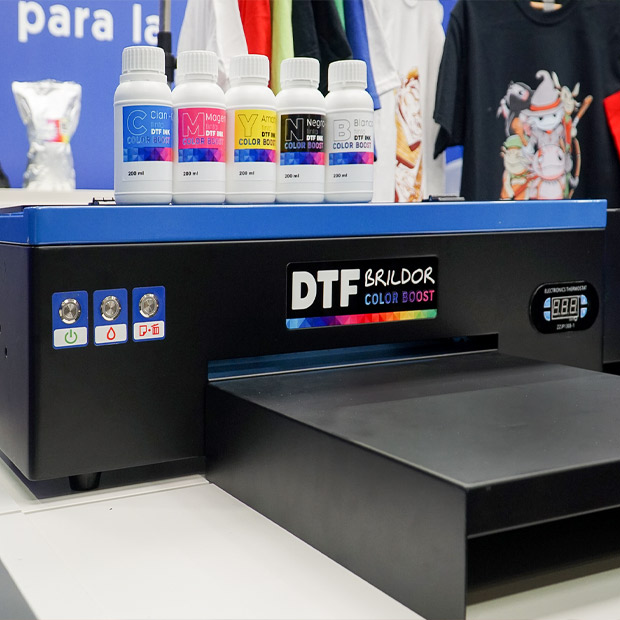

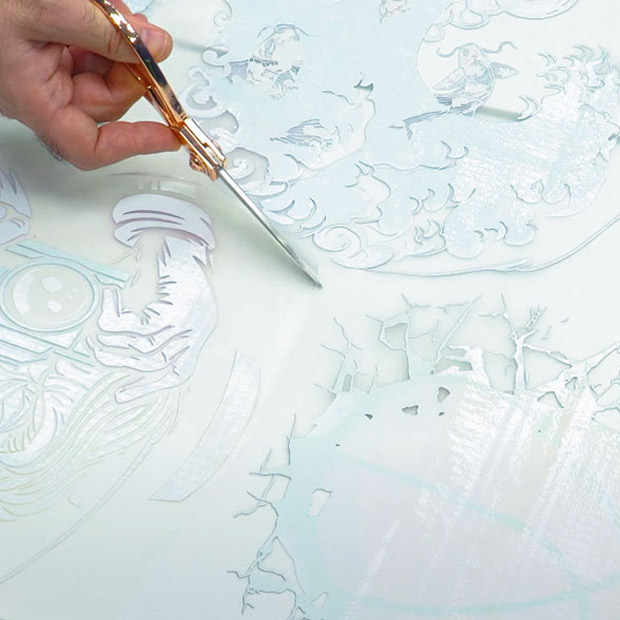
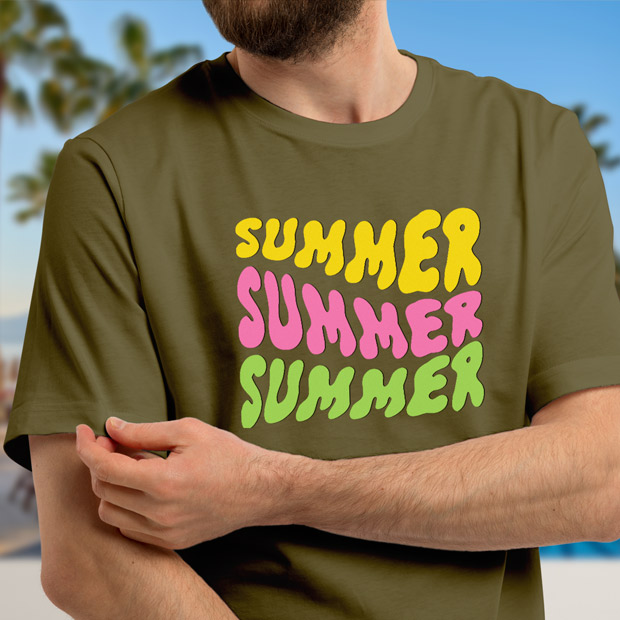
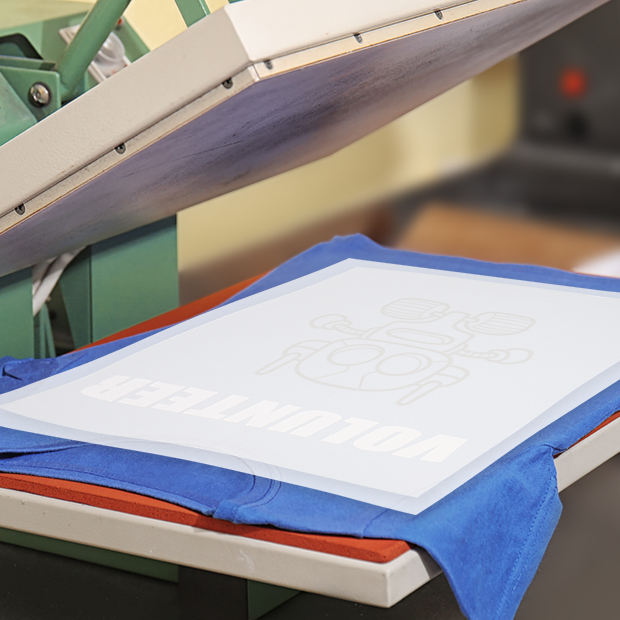

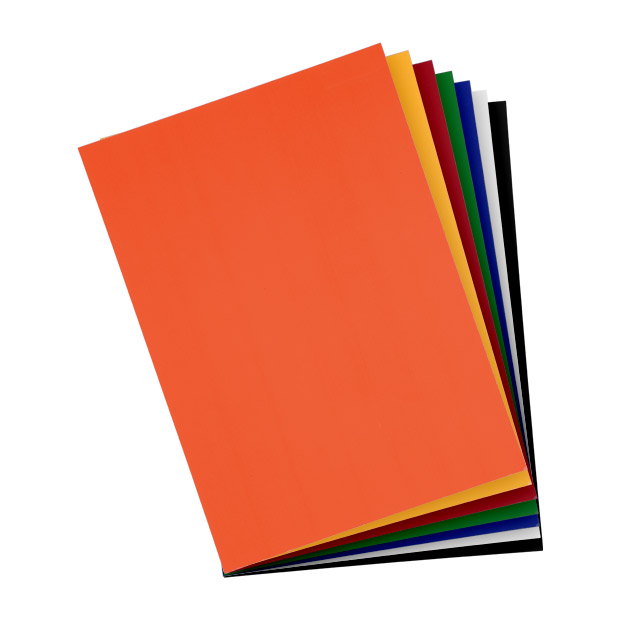
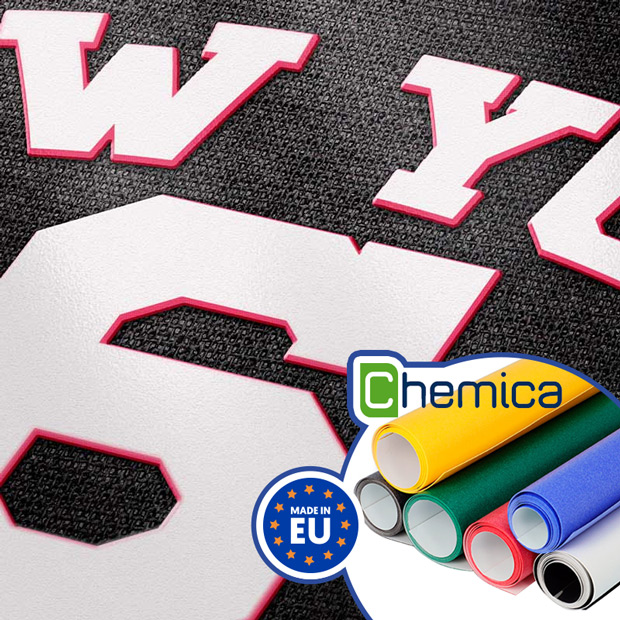
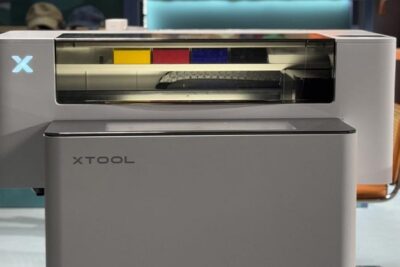
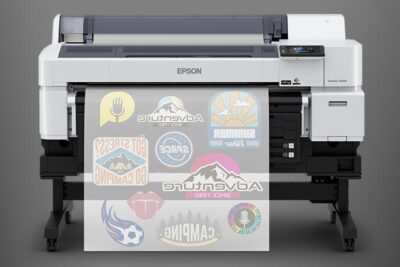
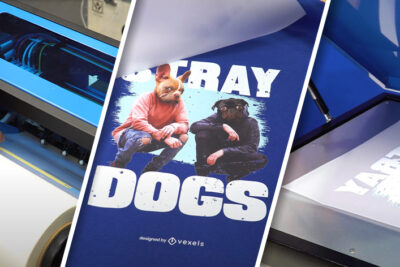
You may also like